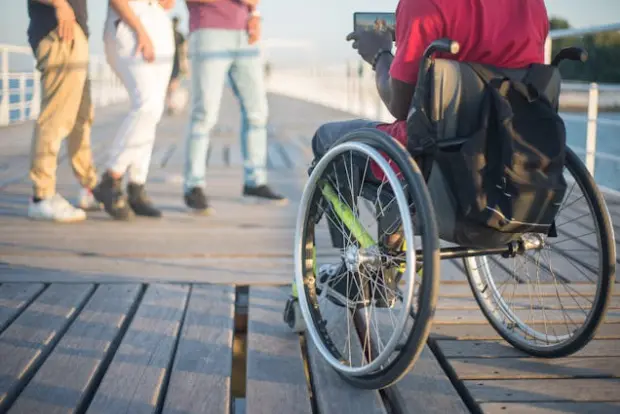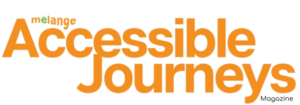By Edrian Blasquino

Listen to this Article
You deserve better than to hope that the “accessible” tag you see on travel booking sites means what you think it means. You want adventures built on confidence, not vague claims and crossed fingers.
Let’s focus on what truly matters. Here are the six non-negotiable pillars for travel spots that work for you:
1. Ignore the “Accessible” Label
“Accessible” means nothing without context. It’s a starting point, not a guarantee. Assume nothing. Dig deeper immediately. What type of accessibility exists? Ask precise questions to get concrete answers based on what you need:
- Is there a roll-in shower with grab bars?
- Does the entrance have a small lip, or can you roll straight in without a ramp?
- Are pathways firm, level, and wide enough consistently, or just near the entrance?
You want details on door widths, turning spaces, and counter heights. Request photos or videos that give you a first-hand view of the routes you anticipate taking the most.
Reviews from travelers with similar needs can help fill out the rest of the picture. For example, if you’re looking to travel to Florida, to look for tips from people who need the same accommodations you do. They’ll be more likely to go deeper than just saying a place is “accessible” and leaving it at that. This is especially helpful for planning visits to busy destinations—like knowing when it’s least crowded at Disney World—which can make navigating popular spaces far more manageable.
Remember: your vacation will depend on these specifics. Don’t settle for generic marketing speak or a manager’s promise that they’re “accessible”. Demand to know exactly what they mean before committing.
2. Scrutinize Every Journey Link
Getting there matters as much as being there. Assume nothing about transport. Dig deeper into every single step:
- Will the airline handle your wheelchair carefully, and what’s their exact boarding process?
- Does the rental car company reliably have hand controls or vans with lifts ready?
- Do local buses or trains actually have working lifts and usable spaces?
- Are wheelchair taxis easy to book?
Again, you want details. That includes the distance as well as the terrain on every point from the airport arrival gate to your destination. Solidify every link before you go and you should have a smooth journey.
3. Interrogate Your Basecamp
Your hotel sets the trip’s tone. Go way beyond the basic “accessible room” description. Dig deeper into the whole property:
- Is it truly step-free from parking through the lobby to the elevators?
- Does your mobility device actually fit comfortably in the elevators and the room?
- Are the grab bars horizontal and vertical where you need them?
- Can you transfer easily to the bed? Is the shower seat truly stable?
- Are the pool, restaurant, and gym genuinely usable, not just reachable?
Contact the hotel directly. Speak to the manager. Ask about emergency plans, specifically the assistance you can expect during a crisis. Their willingness to answer these specifics tells you everything. Trust what they show you, not just the brochure.
4. Demand Full Experience Access
Reaching the attraction is step one. Actually doing the activity is the goal. Dig deeper for real participation:
- Does that “accessible” museum tour offer tactile exhibits or ASL, or just an elevator to the gift shop?
- Will the tour company modify the itinerary and provide transport you can use?
- Are theater seats just crammed in the back, or do they have clear, central views?
- Are park trails paved with a gentle slope, or just labeled “accessible” near the entrance?
Try to speak directly to the attraction’s manager. Explain your specific needs clearly. Ask: “Can I fully engage here?” Because if you’ll only be able to watch from the door, it might not be worth the hassle to get there.
5. Verify Bathroom Access
Nothing wrecks a day faster. Never assume a restroom works for you. Dig deeper at every place you plan to visit:
- Is the stall big enough for a full turning circle?
- Are grab bars placed correctly?
- Does the sink have clear knee space underneath?
- Can you actually close and lock the door?
- Are accessible restrooms reliably open and maintained?
Ask these specifics upfront. Carry a radar key if needed. This basic need is non-negotiable. Confirm it everywhere. The goal here is to have zero surprises on the day itself.
6. Seek Staff Who Get It
Paper policies mean little without understanding people. Dig deeper to gauge real attitude and training:
- When you call, do staff answer knowledgeably and patiently, or sound confused?
- Do they train regularly on disability awareness and practical help?
- How do they respond online to detailed accessibility questions?
- Do reviews mention staff who proactively helped?
Good staff bridge the gap. They find the ramp without being asked. They guide someone who is blind respectfully. They make you feel welcome, not like a problem. This human element turns basic access into a great trip.
Wrapping Up
Finding real access takes work. It needs skepticism and digging. But this effort builds true confidence.
Never forget: you are the final authority on your needs. Speak up for them clearly. The world is opening, bit by bit. With prep focused on what truly counts, you can explore amazing places, soak up new cultures, and make memories that stick.
You deserve adventures that are fully yours. Go find them. The world’s waiting!

EDRIAN BLASQUINO
Edrian is a college instructor turned wordsmith, with a passion for both teaching and writing. With years of experience in higher education, he brings a unique perspective to his writing, crafting engaging and informative content on a variety of topics. Now, he’s excited to explore his creative side and pursue content writing as a hobby.
